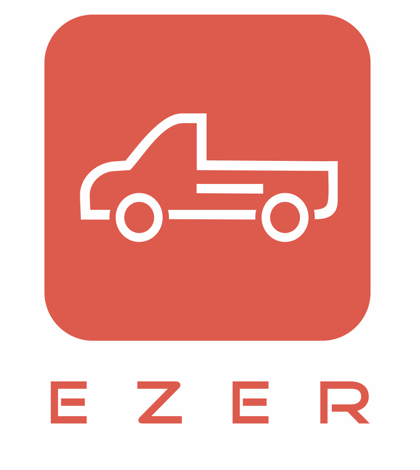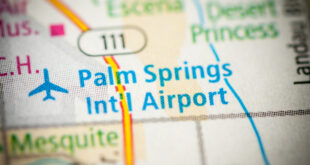In January, Pomona businessman Glenn Todd started EZER, which would be modeled after Uber but move items instead of people. Six months into the venture, EZER isn’t profitable yet but it’s filling orders and generating interest outside of the Inland Empire. The biggest problem remains getting the word out.
Q: You’ve been in business for six months. How would you assess your progress during that time?
A: It’s been pretty exciting. Overall, I would say it has gone well. We have some venture capital people who are looking to invest with us and help the company grow. I can’t say who they are because we’re negotiating with them and we have non-disclosure agreements, but we have several of those in the works.
Q: So your Uber business model is working, at least so far?
A: On most days we have plenty of orders to fill. There are a lot of businesses that need to have stuff moved around, from one office to another, but they don’t want to be trucking companies. That’s where we come in.
Q: Have you varied from that model in any way?
A: Yes. When we started, we envisioned helping people who had made a large purchase at Home Depot or Lowes, something they couldn’t fit in their car. We wouldn’t move them but we would move their items if they weren’t able to. We still do that, but we’ve found that we’re better as a business-to-business model.
Q: Can you give an example?
A: If a construction site runs out of something we take care of it. We’re doing a lot of work with the construction industry.
Q: What have you learned most from Uber?
A: That this business model works best in crowded markets. That’s why we’re trying so hard to get into Los Angeles and San Francisco as soon as we can. That’s the part of the Uber model that we’re really trying to stick to.
Q: How does someone become a driver, and how many drivers have you signed up so far?
A: You must have a driver’s license, of course, and then you have to have to pass a standard background check. We also do a thorough check of an applicant’s Department of Motor Vehicle records. Right now, we have 92 drivers, 23 of which are active.
Q: Are you turning a profit?
A: No, not yet. If we stay on our current course and if the economy stays up I would expect to turn a profit in early 2018 at the earliest. But if we sign a big contract or two we could become profitable overnight.
Q: What has been your biggest obstacle?
A: Probably having to figure out our best marketing strategies. We did some billboards for awhile, and some Internet advertising, and both of those seemed to produce results, although it wasn’t the explosion we hoped it would be. I think word-of-mouth has been our best marketing. Just people telling other people about the business.
Q: What’s been your biggest surprise?
A: Without a doubt, the amount of interest we’ve received from outside of California. We’ve had people in Tokyo who have contacted us, and recently we were contacted by some people in Minneapolis. In both cases they would use their own drivers and follow our business model. If it happens it would be like a franchising arrangement. I’ve also been surprised by the number of young people we’ve been working with. When I was 16 I couldn’t wait to get my driver’s license, but not all of the kids today are like that. That’s one reason I don’t see this business model going away.
Q: Would you consider franchising? That might be the best way to extend the business outside of the Inland Empire.
A: I would consider it, but we would have to sit down and take a very hard look at it. Right now, we’re working on our next deal. Whatever we have on our plate at the moment is our highest priority.
Q: When you launched in January you made it clear that social media would be one of your marketing tools, which makes sense for a business that can only be accessed via a smartphone app. How has that worked out?
A: Pretty well. We have about 340 people following us on Instagram and maybe 170 on Facebook. That’s not bad, considering that we haven’t spent that much on social media.
Q: How close has operating the business been to how you imagined it would be?
A: I’d have to say that it’s exceeded my expectations. I didn’t think we would be getting interest from a place as far away as Tokyo, and I didn’t think we’d be looking at Los Angele and San Francisco so soon, either.
Q: You still own and operate Todd Construction Services, which is also based in Pomona. How much time are you spending getting EZER off the ground?
A: EZER probably takes up about one-third of my day. The rest of it goes to the construction business.
Q: Your original plan was to cover all of the Inland Empire. Have you been able to do that?
A: Yes we have. We’re in the High Desert, the Coachella Valley, the central part. We’re covering the entire market.
Q: Have you been able to do any deliveries beyond the Inland Empire?
A: We’ve gotten as far north as Santa Barbara and as far south as Carlsbad. We’re looking at San Francisco, because we’ve had some interest there, but we still need to get the app set up for that market. We also need to find some drivers.
Q: Are you worried about competition?
A: No, not really. There are other companies that say they’re doing the same thing we’re doing, but if you look closely they aren’t. Maybe some competition would be good for us in the long run, but either way I’m not seeing any now.
 IE Business Daily Business news for the Inland Empire.
IE Business Daily Business news for the Inland Empire.


